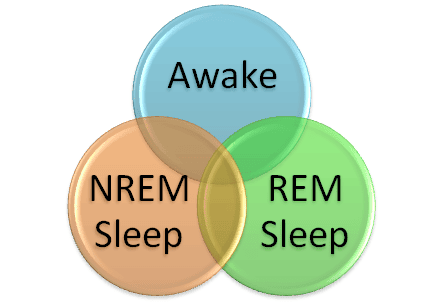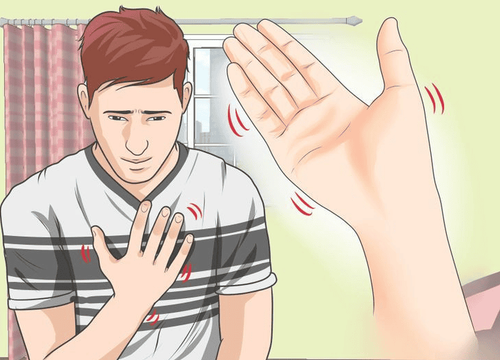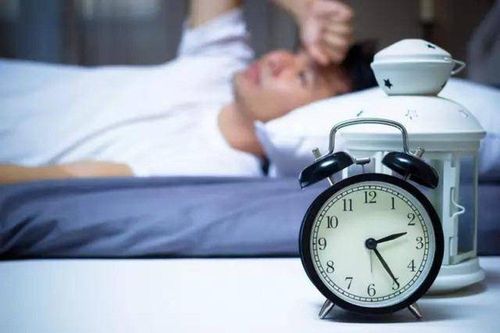This is an automatically translated article.
This article is expertly consulted by Master, Doctor Bui Ngoc Phuong Hoa - General Internal Medicine - Department of Medical Examination & Internal Medicine - Vinmec Danang International General Hospital.Normal sleep has 2 cycles: NREM (Non Rapid Eye Movement: sleep without rapid eye movement) and REM (Rapid eye movement: sleep with rapid eye movement). In which, the NREM cycle is divided into 4 phases. REM cycles alternate between phases of NREM.
Stages of sleep (NREM sleep)
Scientists have long relied on a variety of specialized devices to record the electrical activity of the brain during sleep and have analyzed the physiological structure of sleep and divided sleep into 4 stagesStage 1: the state of lethargy or doze, sleep is not deep, the duration accounts for 50% of sleep. During this stage, breathing becomes slow, heart rate is regular, blood pressure drops, brain temperature drops, eye movements slow down, blood flow to the brain decreases, brain waves are slow, small amplitude and less regular slightly. Sleepers are easily awakened and may not be able to fall back to sleep, waking up until they are too tired to fall asleep. This stage is usually because the bedroom is quiet, no noise, no urine... Stage 2: lasts about 20 minutes. The sleeper may be drowsy, with a few scattered thoughts floating around in his head, but unable to see anything even with his eyes open. Body functions decrease. The brain waves at this time slow down, have a larger amplitude and sometimes there are bursts of fast waves, eyes do not move, heart rate, regular breathing slows down. Sleepers can still be awakened by sounds. Stage 3: The sleeper is very difficult to wake up (deep sleep), must have loud sounds or shake to wake up. EEG waves are slower than phase 2: 1 beat per 1 second, large amplitude (delta wave), eyes and limbs are motionless, sometimes holding hands up and down to fall is still unknown. This stage begins with deep sleep, appearing after 30-40 minutes from when you doze off. This phase is longer in young adults and shorter in the elderly. Stage 4: The deepest sleep stage. EEG wave is Delta wave, large amplitude, slow frequency, sharp wave. At this point the patient goes through a process of forgetting. If the sleeper walks (sleepwalking) or wetting the bed, it will happen during this stage. Stages 3 and 4 are the deepest and most restful stages of sleep. When awakened at this stage, the sleeper will be disoriented and thoughts will be dissolved.

REM sleep
After the deep sleep phase ends, the sleeper returns to stage 2 and then enters the REM state. Usually REM sleep occurs about 70-90 minutes after falling asleep. REM duration will be longer at night and near dawn.During this stage, the sleeper has a relaxed chin, but the face as well as the fingers and toes are twisted. Men can have an erection of the penis, and women can have an erection of the clitoris. However, the large muscles were completely paralyzed and could barely move the trunk, legs, and arms.
Small and irregular brain waves with a wide range of eye activities. In many cases the EEG waves are identical to those in wakefulness.
Significantly increased physical activity: blood pressure fluctuates but can increase significantly, pulse increases irregularly and sleepers face cardiovascular problems and are at high risk of angina chest. Irregular breathing and increased oxygen consumption. REM is the cycle in which dreams occur.
Trắc nghiệm: Bận rộn có ảnh hưởng đến sức khỏe của bạn không?
Cuộc sống hiện đại khiến chúng ta vì quá bận rộn mà quên chăm sóc sức khỏe cho chính mình. Ai cũng biết rằng lịch trình làm việc cả ngày có thể khiến bạn kiệt sức, nhưng cụ thể bận rộn ảnh hưởng thế nào tới sức khỏe? Hãy cùng làm thử bài trắc nghiệm dưới đây.
Alternation between NREM and REM . cycles
Sleepers will alternate between REM and NREM (non-REM) sleep 4-6 times a night with each cycle lasting about 90 minutes on average and ranging from 70 to 110 minutes. However, deep sleep (stages 3 and 4 of NREM) prevails only during the first 2 sleep cycles and occurs less frequently during the night. Therefore, after the first 2 sleep cycles, you may not be able to fall asleep again, but most of the time it is just REM sleep.However, sleep patterns change throughout a person's life.
In infancy, REM sleep is present for more than 50% of total sleep time, and EEG transitions directly from wakefulness to REM sleep without passing through stages 1 to 4 of NREM sleep.
Newborns sleep 16 hours a day interspersed with brief periods of wakefulness.
By 4 months of age, REM sleep is less than 40% and enters the first stage of NREM sleep.
In adults the distribution of sleep stages is as follows:
NREM (75%)
Stage 1: 5% Stage 2: 45% Stage 3: 12% Stage 4: 13% REM (25 %)
Pregnant women need a few hours more sleep than usual in the first 3 months of pregnancy.
Sleep-related disorders are abnormal phenomena that occur suddenly during sleep or occur in between the threshold of wakefulness and sleep. Sleep-related disorders often occur in stages 3 and 4, so people with this disorder often have difficulty remembering the disorders they have.

Where to check for sleep disorders?
Psychology Clinic - Vinmec International General Hospital is the leading prestigious facility in the country in the treatment of diseases related to psychology and mental health, including sleep disorders.With modern medical equipment and a team of leading experts capable of implementing psychological tests, intensive psychotherapy for medical examination and treatment.
With enthusiasm and love for the profession, the medical team and doctors working at the clinic will bring customers the best services with the highest service quality.
Psychology Clinic is currently cooperating with leading professors and experts of Hanoi Medical University, frontline hospitals in the country and internationally to diagnose and treat in order to bring effective medical examination and treatment. best treatment for the patient.
Please dial HOTLINE for more information or register for an appointment HERE. Download MyVinmec app to make appointments faster and to manage your bookings easily.














